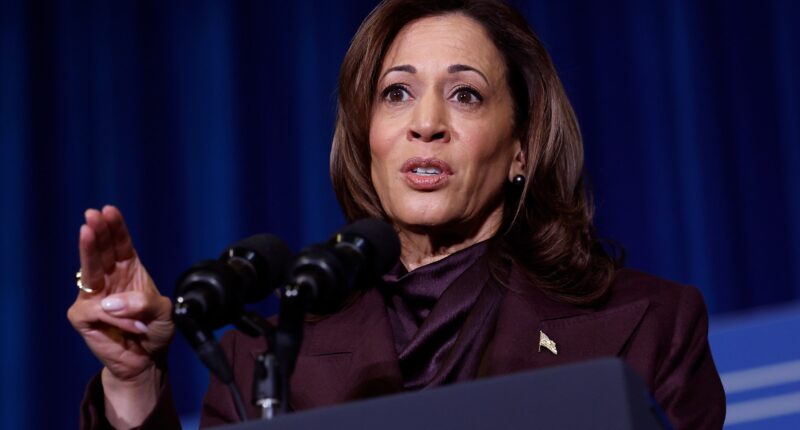KAMALA Harris and Joe Biden have suddenly changed their Christmas plans and look set to remain in Washington, DC this holiday season.
Their travel schedules have seen a sudden and unexpected shakeup as lawmakers in Congress scramble to avoid a government shutdown.


Harris was due to jet to Los Angeles and land at 11:35pm local time on Thursday night.
But, at around midday yesterday, it was confirmed she would remain in Washington, DC.
Biden was set to spend the holidays in Delaware but has since returned to the White House.
Pictures showed the outgoing president boarding Marine One at the Delaware Air National Guard Base in New Castle.
The president was with his wife, Jill, shamed son Hunter, his wife, Melissa Cohen Biden, and their son, Beau.
Biden was later pictured trudging back to the White House with Jill and Beau.
Earlier this week, top Democrats and Republicans had agreed on a bill that would’ve kept the government open until March 14.
Funding for the government is set to run out at midnight on Saturday morning as it stands.
The bill included more than $100 billion for disaster relief and a $10 billion package for farmers.
But, Donald Trump and his transition team rejected the bill outright.
This sent lawmakers back to the drawing board.
Trump has urged GOP lawmakers to get smart.
The statement from Vice President-Elect JD Vance and him suggested that if the Democrats decide to shut down the government as a tactic to achieve all their demands, the advice is to challenge them on that decision.
“It is [Chuck] Schumer and Biden who are holding up aid to our farmers and disaster relief.”
The debt ceiling is the maximum amount of money the Treasury can borrow to pay federal debts.
It is currently $31.4 trillion.
If the debt ceiling issue is not addressed, then it could force the US to default on its debt – something which has never happened.
Defaulting would have an impact on Social Security payments and military salaries.
But, experts say it sends a signal to the world that the US cannot pay off its debt.
Trump admitted that increasing the debt ceiling isn’t an ideal option but said it’s better to do it while Biden is still president.
“If Democrats won’t cooperate on the debt ceiling now, what makes anyone think they would do it in June during our administration?” he said.
“Let’s have this debate now.
“And we should pass a streamlined spending bill that doesn’t give Chuck Schumer and the Democrats everything they want.”
TRUMP PLAN DEFEATED
Republican leaders then tried to cobble a package that would appease Trump, but it was comprehensively defeated in the House of Representatives.
A total of 38 Republicans voted down the proposal.
Had Trump’s plan been approved, the debt ceiling would’ve been suspended for two years.
Hakeem Jeffries, the minority leader in the House, said he would fight for Americans ahead of the vote on the measures backed by Trump.
“That is why we are voting no on this bill — and to stop this reckless, regressive, and reactionary Republican shutdown,” he said on the House floor.
Jeffries told reporters the bill was “laughable.”
He attributed the proposal to Elon Musk, which the Tesla mogul vehemently denied in an X post.
Musk claimed the proposal was “better” than the bipartisan deal that had been struck.
He said the Democrats would deserve a heavy midterm defeat in 2026 if they voted the package down.
There are less than 24 hours remaining until the government shuts down.
In a Truth Social post, Trump said a shutdown should begin on Biden’s watch.
WHAT A SHUTDOWN MEANS?
It remains to be seen if another proposal will be brought to the House floor.
If a shutdown does occur, then it will come just weeks before Trump is inaugurated as the 47th president.
A shutdown would mean that federal government workers wouldn’t get paid just before Christmas.
Staffers could get furloughed.
National parks and monuments would close, and IRS bosses would stop auditing tax returns.
However, Social Security checks would still be issued, and contingency plans created by agencies would kick in.
Federal workers would be retrospectively paid when the government re-opens.
Trump presided over the longest government shutdown in history.
It started on December 22, 2018, and lasted until January 25, 2019.
Trump struggled to get $5.7 billion worth of funding for the southern border wall.



















